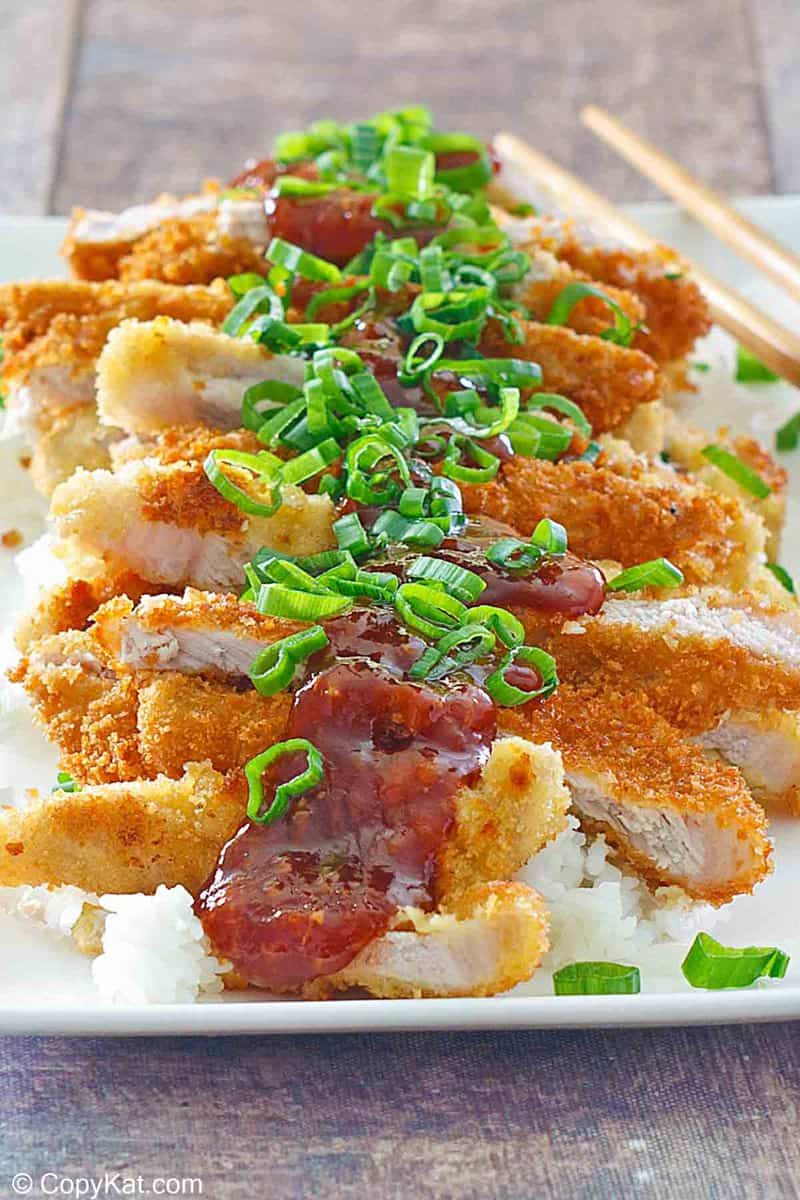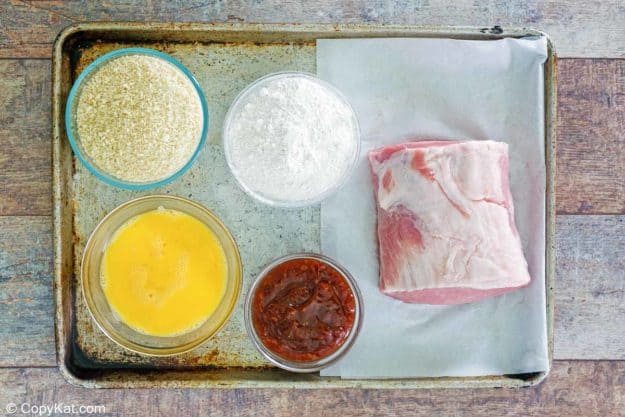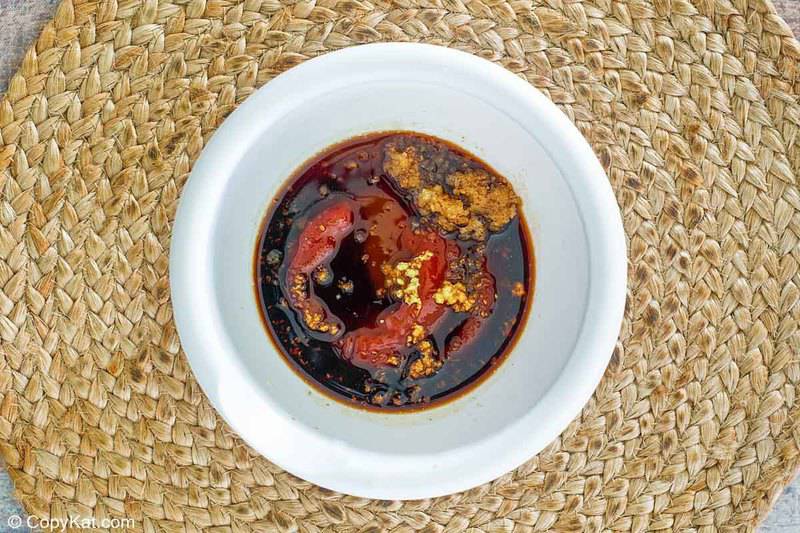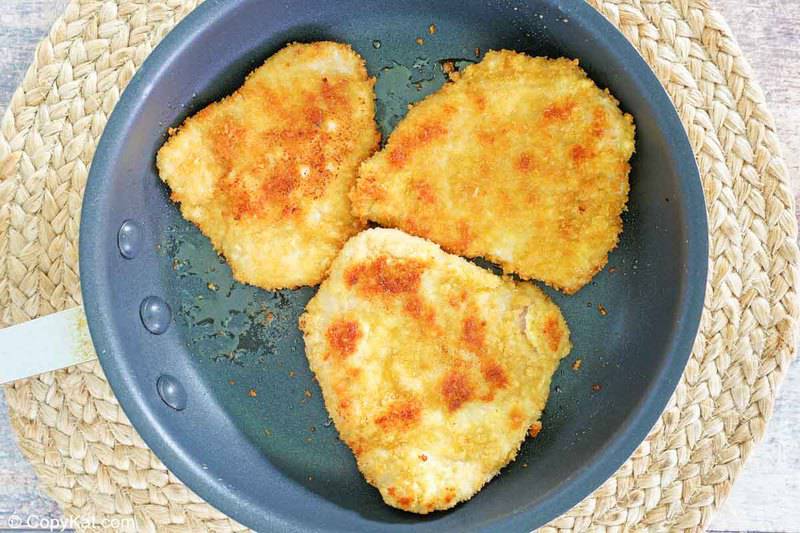My love affair with pork katsu began during a rainy afternoon in Houston, where the crispy exterior and juicy interior created a harmony of textures that I couldn’t forget. This Japanese pork cutlet transforms simple ingredients into a crave-able masterpiece that’s surprisingly easy to make at home. The secret lies in the panko breadcrumbs, which create that signature crunch that other breadings can’t match. Paired with homemade tangy tonkatsu sauce, this dish brings authentic Japanese flavors right to your dining table in just about 35 minutes of active cooking time.

This post contains affiliate links. As an Amazon Associate, I earn from qualifying purchases.
Table of Contents
Why This Recipe Works
The science behind perfect katsu is simple but precise. Salt-seasoning the pork beforehand allows the salt to penetrate the meat, enhancing flavor and tenderness throughout. The three-step breading process creates a protective shell that seals in moisture while forming that distinctive crunchy exterior. Cooking at the precise temperature of 350°F ensures the pork cooks through while the coating achieves golden perfection without burning.
Ingredients
For the Pork Katsu:
- Pork loin – Forms the tender, juicy center of this dish
- Salt – Enhances flavor and tenderizes the meat when applied beforehand
- All-purpose flour – Creates the first layer that helps egg adhere to the meat
- Eggs – Provide the binding layer that helps panko stick to the flour
- Water – Thins the egg mixture slightly for more even coating
- Panko breadcrumbs – Deliver the signature ultra-crispy Japanese coating
- Vegetable oil – Offers a neutral flavor with a high smoke point for frying
For the Tonkatsu Sauce:
- Ketchup – Provides a tomato base with balanced sweetness and acidity
- Soy sauce – Adds umami depth and saltiness
- Brown sugar – Balances the acidity with caramel-like sweetness
- Mirin – Contributes authentic Japanese sweetness and complexity
- Worcestershire sauce – Adds tangy, savory notes
- Fresh ginger – Imparts aromatic warmth and subtle spice
- Garlic – Delivers aromatic depth to round out the sauce

How to Make Pork Katsu
- Place ketchup, soy sauce, brown sugar, mirin, Worcestershire sauce, ginger, and garlic in a small bowl. Stir to combine.
- Thinly slice the pork loin.
- Place each pork loin slice between plastic wrap and gently pound it out to be ¼-inch thick.
- Sprinkle salt on the pork slices, cover, and place them in the refrigerator for an hour.
- Set up a breading station with three bowls.
- Place the all-purpose flour into one bowl.
- Beat the eggs and water together very well, and pour into a second bowl.
- Place panko breadcrumbs into the third bowl.
- Place the pork slices in the flour then shake off any excess.
- Dip them into the egg wash, coat well, and then shake off any excess.
- Dredge them in panko breadcrumbs.
- Place the coated pork slices on a wire rack.
- Heat oil in an iron skillet or a stainless steel pan to 350 degrees.
- Add the pork slices to the pan and cook for 1 to 2 minutes on each side, until the crust sets and is golden brown.
- Remove the pork slices from the pan and place them on a clean wire rack, to drain off excess oil.
- Place the pork in a 200-degree oven for 8 to 10 minutes.
- When the pork is fully cooked, cut it into thin strips that you can pick up with chopsticks.
- Serve with rice, tonkatsu sauce, or your favorite brown sauce.

Crispy Japanese Pork Katsu with Homemade Tonkatsu Sauce
Ingredients
Pork
- 1 pound pork loin cut into thin slices
- salt
- 1½ cups all-purpose flour
- 3 eggs beaten
- 1½ tablespoons water
- 3 cups panko breadcrumbs
- vegetable oil for cooking
Tonkatsu Sauce
- ½ cup ketchup
- 2 tablespoons soy sauce
- 2 teaspoons brown sugar
- 1 tablespoon mirin
- 2 teaspoons Worcestershire sauce
- 1 teaspoon freshly grated ginger
- 1 teaspoon finely minced garlic
Instructions
Tonkatsu Sauce
- In a small bowl combine ketchup, soy sauce, brown sugar, mirin, Worcestershire sauce, ginger, and finely minced garlic. Stir to combine. It is best if you let the sauce rest at least 30 minutes before serving.
Katsu Pork Preparation
- Cut the pork loin into thin slices.
- Place each pork loin slice between some plastic wrap and gently pound out the slice. You want it to be about ¼ inch thick.
- Sprinkle salt on the pork slices, cover, and place them in the refrigerator for about 1 hour. This will help the pork break down and become super juicy. You could omit this step, but the pork will come out better if you let the pork rest.
- Set up a breading station with three bowls.
- Place the all-purpose flour into one bowl.
- Beat the eggs and 1 1/2 tablespoons of water together very well, and pour into a second bowl.
- Place panko breadcrumbs into the third bowl.
- Place the pork slices in the flour and coat the entire surface then shake off any excess.
- Dip them into the egg wash, coat well, then shake off any excess.
- Dredge them in panko breadcrumbs.
- Place the coated pork slices on a wire rack.
- Preheat the oven to 200 degrees.
- Add enough vegetable oil to coat the bottom ½ inch of either an iron skillet or a stainless steel pan and heat to 350 degrees. Your pan should be large enough not to overcrowd the pork.
- Add the pork to the pan and cook for 1 to 2 minutes, just until the crust sets. Flip over and cook for another 1 to 2 minutes. Continue cooking the pork and flipping it over until it is golden brown on both sides.
- Remove the cooked pork slices from the pan and place them on a clean wire rack, to drain off excess oil.
- Then place them into the preheated oven to finish cooking. The pork is still rare at this point, so you should place it into the oven for 8 to 10 minutes so it finishes cooking.
- When the pork is fully cooked, cut it into thin strips that you can pick up with chopsticks.
- Serve with rice, tonkatsu sauce, or your favorite brown sauce.
Notes
Nutrition
What to Serve With Pork Katsu
- Miso soup as a starter.
- Serve it the traditional Japanese way, accompanied by steamed white rice and finely shredded cabbage. The cabbage adds a texture contrast and a refreshing taste to the savory fried pork katsu while also serving as a palate cleanser. As you pick up a piece of katsu pork with your chopsticks, make sure to include a serving of sliced cabbage in the same bite. It’s the best!
- You can julienne the cabbage finely by hand if you have good knife skills and a sharp blade, or, for easier preparation, use a mandolin slicer.
After shredding the cabbage, soak it in a large bowl of iced water for about 5 minutes to crisp it up. Drain, place in a plastic food bag, and refrigerate until ready to serve.
If you don’t like cabbage, you could substitute finely shredded carrots. - Serve your pork katsu with pickled cucumbers (tsukemono) on the side (see recipe below).
Storage and Reheating
- Refrigerator storage – Store cooked katsu in an airtight container for 2-3 days
- Freezer storage (uncooked) – Freeze breaded cutlets with parchment paper between layers for up to 1 month
- Freezer storage (cooked) – Not recommended as breading becomes soggy
- Reheating – For best results, reheat in a 350°F oven for 10 minutes or in an air fryer at 360°F for 3-4 minutes
Love Japanese food? Try these recipes!
- Air Fryer Tempura
- Chicken Katsu
- Hibachi Steak Recipe
- Japanese Mustard Sauce
- Shrimp Tempura
- Tempura Batter Mix
- Yum Yum Sauce
Favorite Pork Recipes
- Cheesy Pork Chops
- Chinese Pork Ribs
- Oven Roasted Pork Loin
- Pork Chili Verde
- Pork Chops and Gravy
- Pork Guisada
Check out more of my easy pork recipes and the best Asian recipes here on CopyKat!







Could you use boneless pork chops for this, or would they end up too tough?
I think this would work just fine!
So I’ve made this twice now. Great recipe! I do have to edit it a little bit just because I use pork chops instead of pork loin. The chops are slightly thicker, so I don’t need as much coating material and I need to cook them longer in the oven, typically 45 minutes covered and another 15 uncovered. The sauce is great and using panko instead of traditional breadcrumbs makes it much crispier!
So glad you enjoy this! I love panko on pork, it’s so crispy.
I read recipe three times, there is NO chicken. Your proof reader goofed
It’s PORK Katsu!